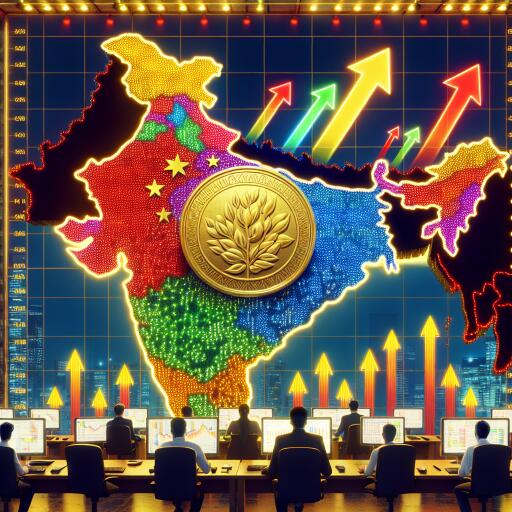India Targets $100 Billion FDI Annually, Attracts China Hedge Investors
India is setting ambitious goals to attract foreign direct investment (FDI), targeting a minimum of $100 billion annually in a strategic move to position itself as a prime destination for investors diversifying away from China. This initiative, as outlined by senior official Rajesh Kumar Singh, marks a significant uptick from an annual average of over $70 billion in FDI over the past five years up to March 2023.
“Our target is that we will average at least $100 billion over the next five years. The trend is very positive and upward,” highlighted Singh, who serves as the secretary in the Department for Promotion of Industry and Internal Trade. This optimistic projection comes at a time when India is showcasing robust economic growth, becoming an attractive hub for multinational corporations seeking to mitigate geopolitical risks through a “China plus one” strategy. Prominent global players like Apple and Samsung Electronics are among those expanding their manufacturing bases in India, capitalizing on incentives put forth by Prime Minister Narendra Modi’s government.
Despite the surge in local manufacturing, foreign investment has lagged, a discrepancy Singh attributes to global challenges such as elevated inflation, rising interest rates in developed nations, and geopolitical strife. These factors, combined with perceived risks in emerging markets, have somewhat dampened the pace of FDI. However, the Indian government is committed to bridging this gap, promising to roll out further measures geared towards simplifying FDI regulations and enhancing the ease of doing business in India.
India’s burgeoning market potential in sectors like electric vehicles, electronic goods, and consumer products is particularly noteworthy, given the relatively low penetration levels in these areas among the Indian population. The government’s efforts to increase the manufacturing sector’s contribution to the economy have been a cornerstone of Modi’s administration. As Modi seeks a third term in the upcoming elections, the role of initiatives like the production-linked incentive (PLI) program in driving manufacturing growth and reducing dependency on imports becomes ever more critical.
The PLI scheme, in particular, has led to notable advancements in manufacturing capacities within India, slashing imports in sectors such as telecommunications and auto components. Singh also underscored the significant boost in exports driven by the emergence of new industries, including the local production of at least 39 new medical devices.
Looking ahead, the Indian government has ambitious plans to roll out several new industrial corridors, with approval anticipated within the first 100 days of the new administration. While acknowledging slower-than-desired progress in the steel and textile sectors under the PLI scheme, Singh mentioned efforts to expand the range of items covered by these incentives. This proactive approach by the Indian government signals a strong commitment to not only achieving but surpassing the $100 billion annual FDI target, reinforcing India’s position as a vital player on the global economic stage.
